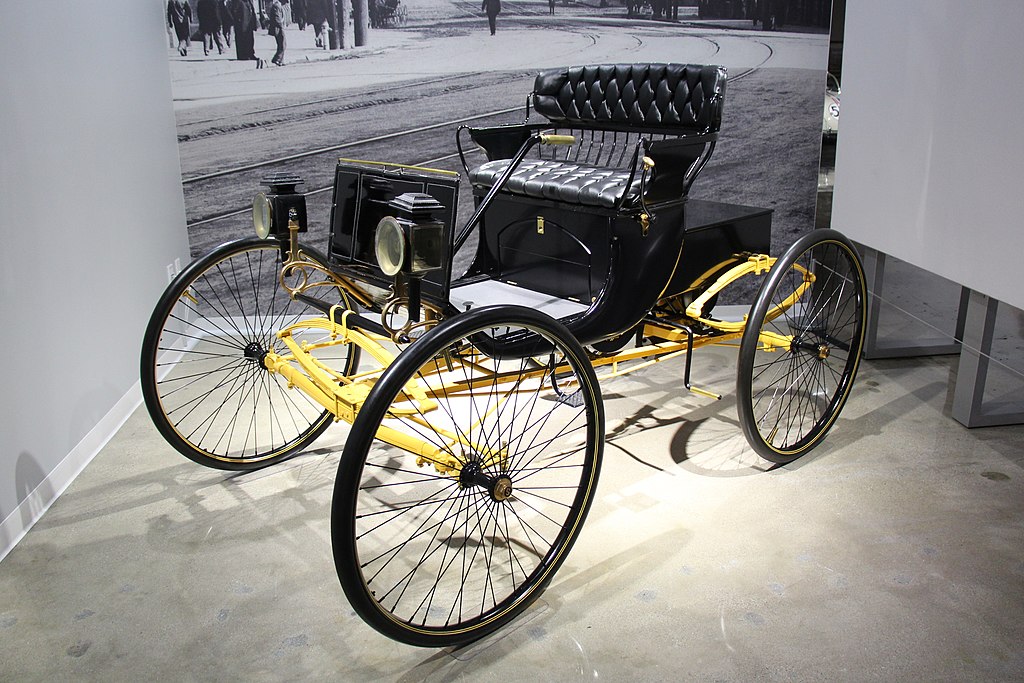
“The Death of Socrates” by Jacques-Louis David depicts the famous philosopher as the stoic older man in a white robe sitting upright on a bed. His right hand extended over a cup, the left hand is gesturing in the air.
He is surrounded by his students and loyal followers, who are all showing emotional distress. The young man handing him the cup looks the other way, with his face in his hand. Another man clutches Socrates’s thigh, begging him not to take the poison.
An elderly man sits at the end of the bed. It is Plato, his most famous student, and he is shown slumped over and looking in his lap.
This famous painting depicts the execution of Socrates, as told by Plato. Socrates has been convicted of corrupting the youth of Athens and introducing strange gods and has been sentenced to die by drinking poison hemlock.
Socrates uses his death as the last lesson for his pupils, by not fleeing when he was given the opportunity, but facing death calmly.
Jacques-Louis David uses the color of the robes to highlight the level of emotional distress display by the various people in this painting. The shades of red become more vibrant and culminate in the dark red robe of the man holding the cup of poison.
The only two serene men, Socrates and Plato, are shown in a contrasting bluish and white.
Socrates was a classical Greek Athenian philosopher credited as one of the founders of Western philosophy. He left no original writing of his teachings and is known chiefly through the accounts of his students, such as Plato and Xenophon.
Plato’s dialogues are among the most comprehensive reports of Socrates to survive, though it is unclear the degree to which Plato represented Socrates’s exact views.
Socrates’s search for the truth and wisdom had made some prominent Athenians, who he had publicly questioned, look foolish. These prominent Athenians turned against him and sought revenge by accusing of wrongdoing.
Socrates defended his role by continuing to argue for the truth until the end. In 399 BC, Socrates was found guilty, and as punishment was sentenced to death by the drinking of a mixture containing poison hemlock.
Socrates turned down pleas to attempt an escape from prison. He had an opportunity to escape, and there was an expectation that he would leave Athens in exile and not die, but he refused that option.
Socrates’s death is described at the end of Plato’s “Phaedo,” which states that after drinking the poison, he walked around until his legs felt numb. The numbness slowly crept up his body until it reached his heart. Some of Socrates last words included:
“all of philosophy is training for death.”
Jacques-Louis David
Jacques-Louis David (1748 – 1825) was a French painter in the Neoclassical style, considered to be the preeminent painter of the era.
In the 1780s, his history paintings marked a change in taste away from Rococo frivolity toward a classical austerity and feeling, harmonizing with the moral climate of the final years of the Royal Régime.
David became an active supporter of the French Revolution and friend of Maximilien Robespierre and was effectively a dictator of the arts under the French Republic.
Imprisoned after Robespierre’s fall from power, he aligned himself with yet another political regime upon his release, that of Napoleon. At this time, David developed his Empire style.
After Napoleon’s fall from Imperial power and the Bourbon revival, David exiled himself to Brussels, then in the United Kingdom of the Netherlands, where he remained until his death.
David had a large number of pupils, making him the most substantial influence in French art of the early 19th century, primarily academic Salon painting.
The Death of Socrates
- Title: The Death of Socrates
- French: La Mort de Socrate
- Artist: Jacques-Louis David
- Year: 1787
- Medium: Oil on canvas
- Dimensions: 130×196 cm
- Museum: Metropolitan Museum of Art – MET
Jacques-Louis David
- Name: Jacques-Louis David
- Birth: 1748 – Paris, Kingdom of France
- Died: 1825 (aged 77) – Brussels, United Netherlands
- Nationality: French
- Notable Works:
- The Death of Socrates
- The Emperor Napoleon in His Study at the Tuileries
- The Death of Marat
- Oath of the Horatii
Exploring the Art of Philosophy
- Diogenes by John William Waterhouse
- “The Death of Socrates” by Jacques-Louis David
- The Emperor as Philosopher, Marcus Aurelius
- Aristotle by Jusepe de Ribera
- Euclid by Jusepe de Ribera
- The Art of Philosophy
- The Art of Everything
Quotes by Socrates
~~~
“An unexamined life is not worth living.”
~~~
“Beware the barrenness of a busy life.”
~~~
“I only wish that ordinary people had an unlimited capacity for doing harm; then they might have an unlimited power for doing good.”
~~~
“If a man is proud of his wealth, he should not be praised until it is known how he employs it.”
~~~
“The beginning of wisdom is a definition of terms.”
~~~
“I know that I am intelligent because I know that I know nothing.”
~~~
“What a lot of things there are that a man can do without.”
~~~
“Education is the kindling of a flame, not the filling of a vessel.”
~~~
“Know thyself.”
~~~
“How many are the things I can do without!”
~~~
“Where there is reverence, there is fear, but there is not reverence everywhere that there is fear because fear presumably has a wider extension than reverence.”
~~~
“When the debate is over, slander becomes the tool of the loser.”
~~~
“By all means, marry: if you get a good wife, you’ll become happy; if you get a bad one, you’ll become a philosopher.”
~~~
“True knowledge exists in knowing that you know nothing.”
~~~
“To find yourself, think for yourself.”
~~~
“I was too honest a man to be a politician and live.”
~~~
“I cannot teach anybody anything; I can only make them think.”
~~~
“He who is not contented with what he has, would not be contented with what he would like to have.”
~~~
“There is only one good, knowledge, and one evil, ignorance.”
~~~
“I cannot teach anybody anything. I can only make them think.”
~~~
“Our prayers should be for blessings in general, for God knows best what is good for us.”
~~~
“They are not only idle who do nothing, but they are idle also who might be better employed.”
~~~
Explore the Metropolitan Museum of Art
MET European Paintings Collection
- “Pygmalion and Galatea” by Jean-Léon
- “Saint Jerome as Scholar” by El Greco
- “Portrait of Juan de Pareja” by Diego Velázquez
- “Camille Monet on a Garden Bench” by Claude Monet
- “View of Toledo” by El Greco
- “The Musicians” by Caravaggio
- “The Death of Socrates” by Jacques-Louis David
- “The Harvesters” by Pieter Bruegel the Elder
- “Young Woman Drawing” by Marie-Denise Villers
- “The Grand Canal, Venice” by J. M. W. Turner
- “The Houses of Parliament (Effect of Fog)” by Claude Monet
- “Madame Cézanne in a Red Dress” by Paul Cézanne
MET Modern and Contemporary Art Collection
- “Reclining Nude” by Amedeo Modigliani
- “Improvisation 27 (Garden of Love II)” by Wassily Kandinsky
- “Jeanne Hébuterne” by Amedeo Modigliani
- “The Card Players” by Paul Cézanne
- “Bathers” by Paul Cézanne
MET Greek and Roman Art Collection
- Statue of a Kouros
- Amathus Sarcophagus
- Mycenaean Terracotta Female Figures
MET Egyptian Art Collection
- The Temple of Dendur
- The Sphinx of Hatshepsut
- William the Faience Hippopotamus
MET Asian Art Collection
- Luohan – Yixian Glazed Ceramic Sculpture
- Pillow with Landscape Scenes – Zhang Family Workshop
- Jar with Dragon
MET Ancient Near Eastern Art Collection
- Sumerian Standing Male Worshiper
- Head of a Beardless Royal Attendant – Eunuch
- Human-Headed Winged Bull (Lamassu)
MET American Wing Collection
- “Washington Crossing the Delaware” by Emanuel Leutze
- “Portrait of Madame X” by John Singer Sargent
- “Mother and Child” by Mary Cassatt
- “Fur Traders Descending the Missouri” by George Caleb Bingham
- “The Gulf Stream” by Winslow Homer
MET Islamic Art Collection
- Blue Qur’an
- Marble Jar of Zayn al-Din Yahya Al-Ustadar
- The Damascus Room
MET Arts of Africa, Oceania, and the Americas Collection
- Benin Ivory Mask
- African Face Mask – Kpeliye’ e
- Sican Funerary Mask – Peru
- Ceremonial Axe – Papua New Guinea
MET European Sculpture and Decorative Arts Collection
- “Hercules the Archer” by Antoine Bourdelle
- “Orpheus and Eurydice” by Auguste Rodin
- “Perseus with the Head of Medusa” by Antonio Canova
MET Medieval Art Collection
- “The Last Supper” by Ugolino di Nerio
- Plaque with the Journey to Emmaus and Noli Me Tangere
- Doorway from the Church of San Nicolò, San Gemini
MET Drawings and Prints Collection
- Album of Tournaments and Parades in Nuremberg
- “Canvassing for Votes” by William Hogarth
- “Christ and the Woman of Samaria” by Rembrandt
MET Costume Institute Collection
- Bodice
- Cardinal Cape
- Doublet
MET Arms and Armor Collection
- Blade and Mounting for a Sword (Katana)
- Double-Barreled Flintlock Shotgun
MET Photograph Collection
- Loie Fuller Dancing
- Sala Delle Statue, Vatican
- Gardner’s Photographic Sketchbook of the War
MET Musical Instrument Collection
- Ming-Dynasty Pipa
- Grand Piano
- Bass Fluegel Horn in B-flat
Explore the MET
- The MET Cloisters
- Met Breuer
- Metropolitan Museum of Art – MET
The Death of Socrates: How To Read A Painting
Jacques Louis David’s Drawing “The Death of Socrates”
The Death of Socrates- Analysis
The Death of Socrates (David)
~~~
“An unexamined life is not worth living.”
– Socrates
~~~
Photo Credit: 1) [Public domain], via Wikimedia Commons
Top Posts & Pages








 Sponsor your Favorite Page
Sponsor your Favorite Page SEARCH Search for: Search Follow UsJoin – The JOM Membership Program
Become a Patron!
Sponsor a Masterpiece with YOUR NAME CHOICE for $5
Share this:
- Tweet
